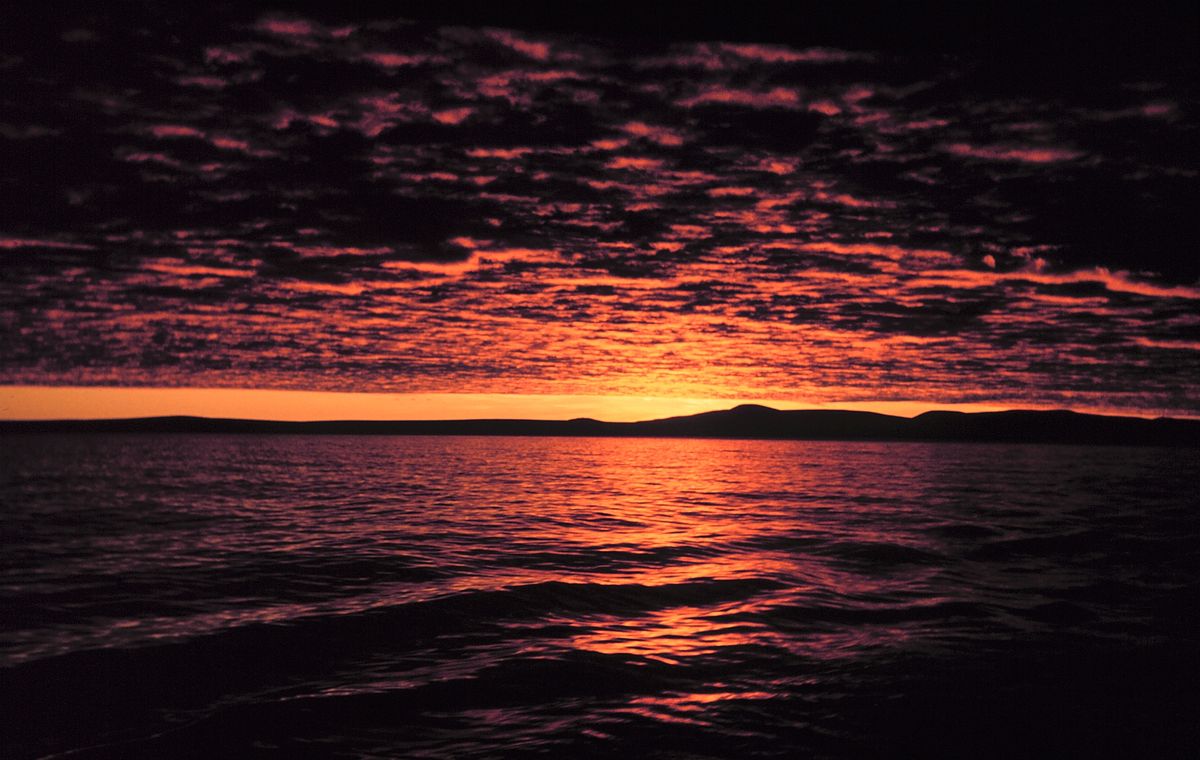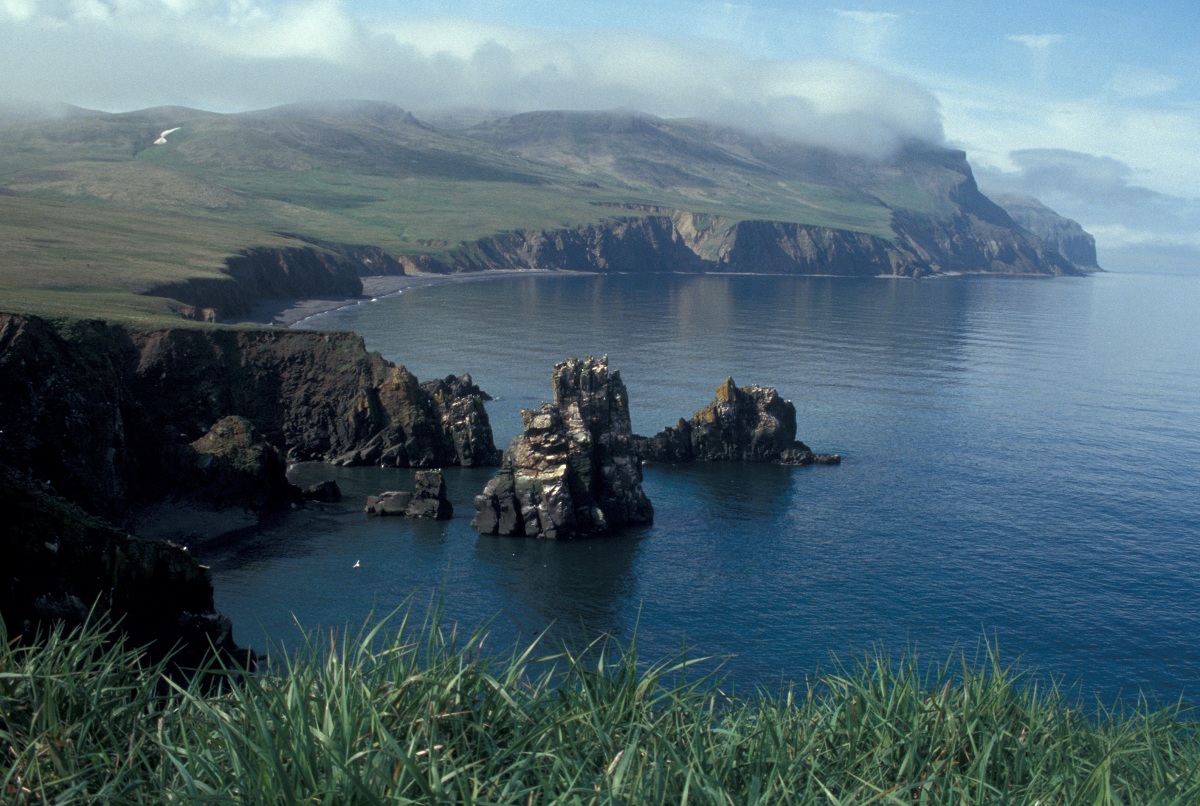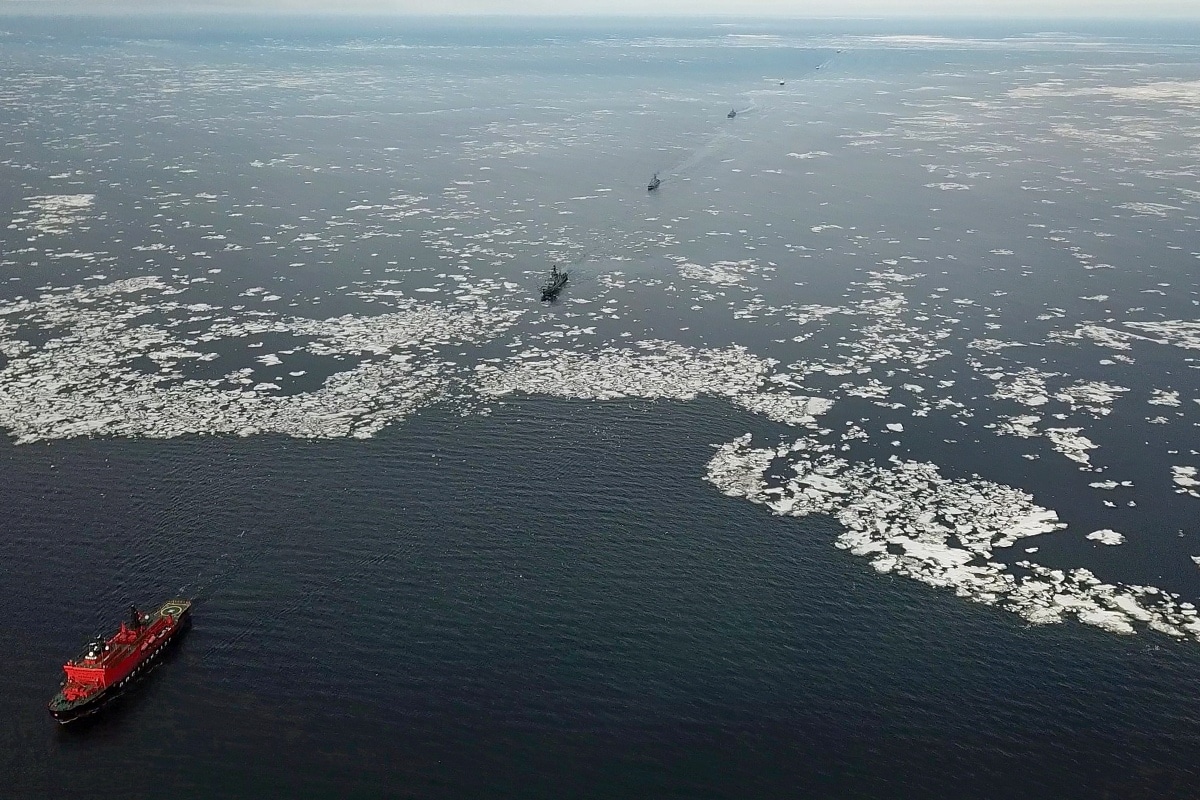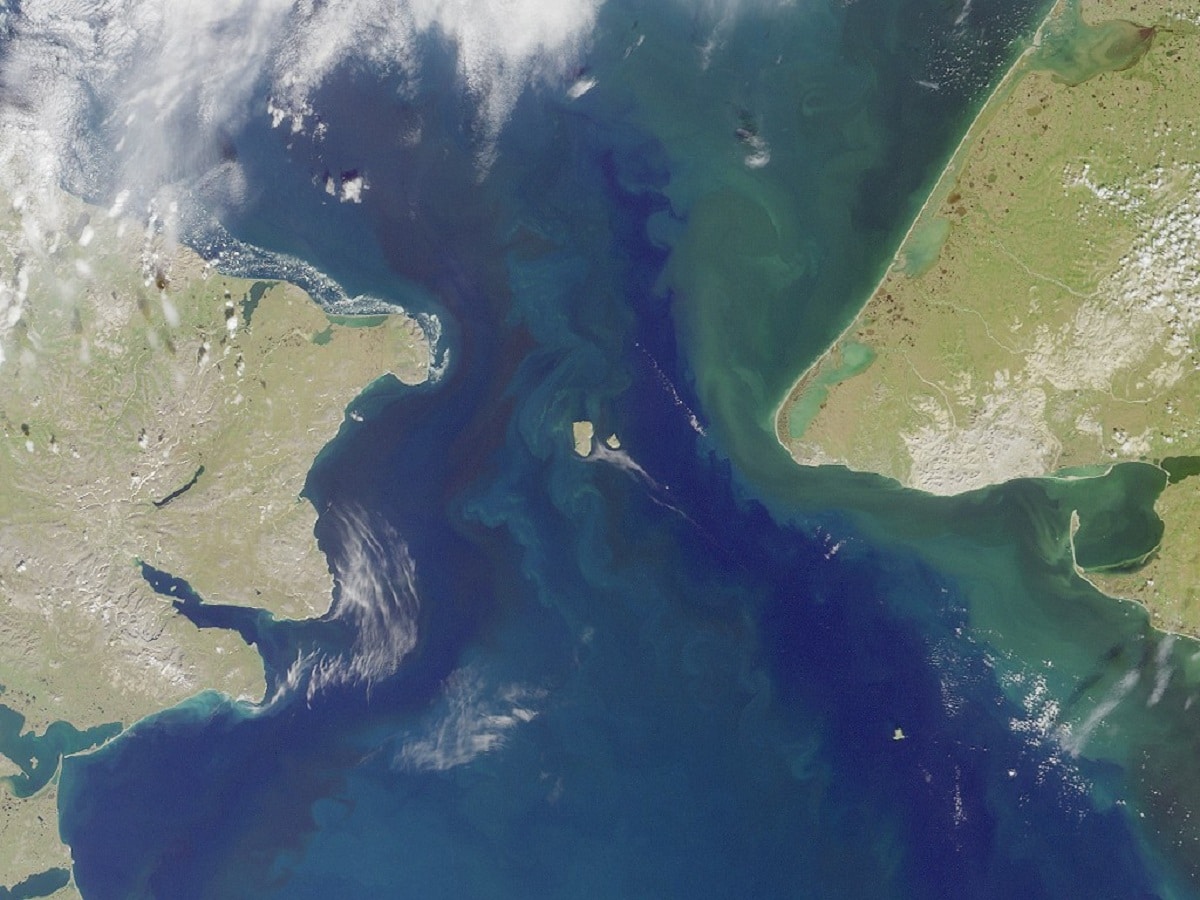
One of the best known seas in the world and that separates America and Russia is the Bering Sea. It is named in honor of Vitus Jonassen Bering. It is about a Danish explorer who led expeditions to the Beringia area in the XNUMXth century. It is a sea that is located in the northern Pacific Ocean near Alaska and Russia. It has some special characteristics and a biodiversity that is quite interesting to know.
Therefore, we are going to dedicate this article to tell you about all the characteristics, formation and biodiversity of the Bering Sea.
Key features

The Bering Sea is in charge of separating it from the rest of the Pacific thanks to the presence of the Aleutian Islands, and the Alaska Peninsula. One of the best known parts of this entire area is the Bering Strait. It has a width of 85 kilometers and connects to the Chukchi Sea and the Arctic Ocean. All this area that connects between one and the other is the Bering Strait.
If we analyze the entire sea from a map, we see that it covers more than two million square kilometers. The shape of this sea is quite curious. And it is that it has a triangular shape and contains the Bering Strait, Bristol Bay, the Gulf of Anadyr and Norton Sound. In addition, this sea contains other islands including the following: Diomedes, San Mateo Island, Karáguinski Island and Sledge Island, and about 16 submarine canyons.
In this sea there is a circulation of water currents that it is influenced by the Alaskan current. The flow that brings water into this basin comes from this stream. Given the morphological characteristics of this sea, it is known that the surface area is cooler while the deeper waters are warm. The warmer waters are being introduced from the Pacific Ocean. This water moves through numerous straits of the islands to the south.
Another of the characteristics for which this sea is well known is that due to its geographical location and various factors the northern part usually freezes in winter. In general it is a fairly cold sea. You can see that most of the winter is frozen over and during the summer you can register water temperatures of less than zero degrees. Despite what one might think, the salinity of this sea is very low. Somewhat higher salt concentrations may be found in some deeper areas. However, being such a variable depth, it can be said that half of the sea is less than 200 meters deep. In some parts, just under 152 meters and in others it reaches a depth of 3.600 meters.
The deepest point of the Bering Sea is located in the Bowers Basin about 4.067 meters deep.
Formation of the Bering Sea

It must be borne in mind that, for the formation of the Bering Sea, the age of the Pacific Ocean must be estimated, since it is highly influenced by it. Its estimated age is approximately 750 million years. When Rodinia, known as a supercontinent more than 1.000 billion years ago, began to form, this entire area was going through a process of separation. As the land parted, the Pacific Ocean parted and gave way to the Bering Sea.
This sea stops the rest of the ocean during the Eocene epoch. The main part that is responsible for separating the rest of the ocean is the formation of the arc of the Aleutian Islands. The Bering Sea was formed by a wide continental shelf bounded by the Aleutian Islands chain and the Bering Strait. This platform originated as a result of the collision of the platforms in the early Cretaceous period between eastern Siberia and the North Slope Block. The North Slope Block is an area that is located in northern Alaska.
Biodiversity of the Bering Sea

As we have mentioned before, it is a sea that has many species of animals and plants. Be considered for a long time as a marine ecosystem with great importance. All the arctic areas that exist between Russia, Alaska and Canada benefit from the presence of this biodiversity. And this is because in its waters you can find a multitude of marine mammals, fish, mollusks, crustaceans and other animals of microscopic size.
There are more than 160 species of floating algae that have their ecosystem in the Bering Sea. For example, we find the giant brown algae that are capable of forming lush forests in some aquatic areas. Among the most common species of animals in the Bering Sea are the following:
- Walrus
- Fin whale
- Boreal whale
- North Pacific Right Whale
- Steller's Sea Lion
- Marine nutrition
- For each
- Salmon
- Herring
- Pacific cod
- Giant red crab
- Hedgehog
- Starfish
And the list goes on. There are in total approximately 420 species of fish that has helped the proliferation of fishing and the business with it. However, there are some impacts and threats that are affecting the Bering Sea.
Threats
Keep in mind that human impacts are causing problems in the Bering Sea. And it is that it is an area that is very vulnerable to the negative effects of global warming. Being an area near the Arctic Ocean it is being affected by rising water levels as a result of the melting of the polar ice caps. In addition, it must be taken into account that, being an intensely productive sea in fishing, it suffers from exploitation and problems have been caused in many species. For example, the westernmost area is in a state of overfishing and illegal fishing.
Parts of the Bering Sea have been polluted with large amounts of microscopic organic waste and toxic substances. The problem with these substances is that they are more difficult to eliminate. In the body of many sea animals have been found polychlorinated biphenyls which are persistent organic pollutants, traces of mercury, lead, selenium and cadmium. We also see some impacts produced by maritime traffic that disturb marine life and a great risk of oil spills.
I hope that with this information you can learn more about the Bering Sea.